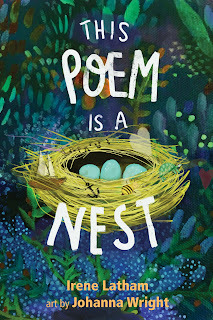Marcia Thornton Jones's Blog, page 14
November 12, 2024
BOOK REVIEW: SPYING ON SPIES: How Elizebeth Friedman Broke the Nazis' Secret Codes. Darlene Beck Jacobson
This month I am really excited to share a new middle grade book from best selling author/illustrator Marissa Moss.
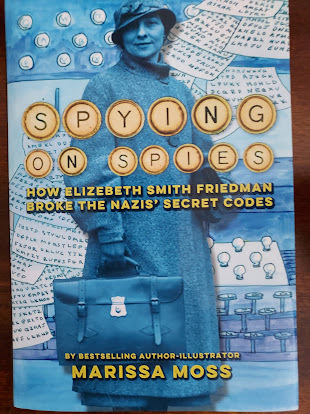
SPYING ON SPIES: How Elizebeth Smith Friedman Broke the Nazis' Secret Codes is a fascinating and easy to understand middle grade book that details the historicalrecord of one of America’s most important – and mostly unknown – cryptographerand code breaker of all time. Elizebeth Smith Friedman (along with her husbandWilliam) was instrumental in breaking the “unbreakable” Nazi and Japanese codesand ciphers of WWII, saving countless lives in the process.
Unappreciatedand given little credit for her extraordinary work during both world wars andProhibition, Elizebeth is finally getting recognition for her decades as acryptographer and code breaker for the US government. Thanks to the release ofclassified documents, author Moss has brought Elizebeth’s amazing story tolight. The secretive work of the husband-and-wife team is told in rich detailthanks to Moss’s ability to bring history to life in a readable and easilydigested format. Chapter illustrations highlight Elizebeth’s personal life andthe struggles she had to endure to succeed at her important work.
This book isa wonderful addition to the history of early 20th CenturyAmerica through WWII. Back matter includes lessons in code breaking andcryptography as well as Friedman family photos, glossary, and references. Anexcellent classroom resource and good reading for anyone interested in amazingfemales overlooked in history.
November 11, 2024
So, That's Where It Came From (Maybe)
The Smack Dab inspiration word of the month is WHIMSY
Great. Now what? I had nothing.
Except one word and not even a real one: MIMSY...
As found in this.
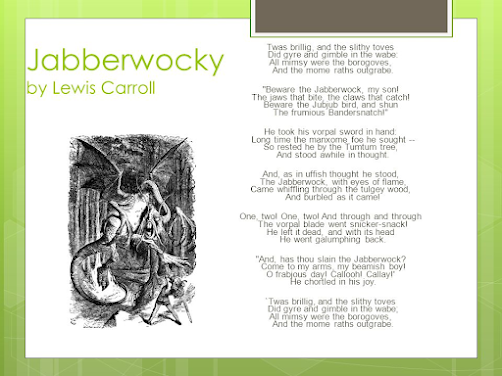
Why could I not get the Lewis Carroll nonsense word out of my head and get on with a real idea? But wait. This was a real idea. It was, perhaps, this poem plus the nonsense words in Dr. Seuss's On Beyond Zebra that fueled my young imagination. And just maybe that led to an affinity for word play that segued into putting puzzles and such into The Gollywhopper Games. And it's entirely possible these are what led me to discover, yes, an occasional sense of whimsy.

Jody Feldman just realized she may need to return to such works that sparked the warehouse scene in The Gollywhopper Games, the one so many kiddos refer to along with the word 'inspiraton'.
November 8, 2024
a bit of whimsy -- by jane kelley
Thinking about the night sky . . .
 Once there was a planet that orbited a star. Round and round went the Earth. Year after year. Staying in its own lane--away from the gas giants. Minding its own planet business. What could that be, you wonder. Well, it had to rotate. It had to hang on to its atmosphere. It had to differentiate its layers.
Once there was a planet that orbited a star. Round and round went the Earth. Year after year. Staying in its own lane--away from the gas giants. Minding its own planet business. What could that be, you wonder. Well, it had to rotate. It had to hang on to its atmosphere. It had to differentiate its layers. Earth had some visitors. Party crashers, so to speak. They didn't do too much damage, considering. Just a few scars here and there. Nothing that really changed Earth. Some comets even remembered to BYOB. Earth should have been happy about that. Water was super important for a little something that hadn't happened yet -- life.
Then one day, another planet Theia came hurtling through space. Theia crashed into Earth. Kapow! The collision was so forceful that most of Theia became part of Earth's core.
Unfortunately some of Theia and Earth got knocked into space. What a mess! Eventually the chunks got it together. Truly. They decided it was better to form a group. At first they were a lumpy old thing, but before long they became big enough to be their own orb!
As if a stone giant had placed a beautiful sphere up in the sky to inspire us, console us, and keep us company on our journey through space.
JANE KELLEY is very fond of Earth's moon -- and making up stories which are inspired by the truth.
November 3, 2024
Whimsical Poetry
I am a big fan of whimsy! As a poet, I've found poetry and whimsy to often be one and the same.
Poetry is meant to delight. And of all the book experiences I've had so far, none delighted me more than creating THIS POEM IS A NEST (WordSong, words by Irene Latham, illus, by Johanna Wright).
It's a collection of one big "Nest" poem (about a robin's nest across seasons) and 161 "nestling" poems found inside "Nest." So it's basically an exploration of how to have fun creating "found" poems.
I smile every time I think about this book. And when I read the poems, it just reminds me of all the reasons I write in the first place: JOY, DISCOVERY, MEANING... I love this little book!
NEST released in 2020—a year that unfortunately swallowed up a lot of books. It garnered several starred reviews (Booklist, Kirkus, School Library Journal), for which I continue to be most grateful. And then it kind of...disappeared.
So today I thought it would be fun to resurrect the NEST and share a bit of the whimsy found inside. If you like what you see, would you please share the book with others? Together we can spread whimsy around the world! (Whew. We sure do need it.)
Thank you so much for reading!
from the section called "Color My World"
RED
autumn leaves
puddle
beneath roof
of sky
from the section "Poems About Wild Animals"
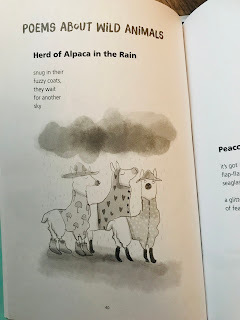 HERD OF ALPACA IN THE RAIN
HERD OF ALPACA IN THE RAINsnug in their
fuzzy coats,
they wait
for another
sky
from the section "Emotions"
WHAT HOPE IS
a cup
of stars
from the section "Poems for Fun and Fulfillment"
WATCHING A SUNSET
blue
becomes
butter
from the section "Definition Poems"
A DEFINITION OF MAYBE
hinge between
wild
and safe
from the section "Ars Poetica"
WHERE YOU'LL FIND ME ON A FLYAWAY DAY
in
oak branches
where words
and art
anchor me
WHILE YOU SLEEP
moon
stocks poems
with dreams
---
Here are some additional resources for you to enjoy:
Nestling poems from teachers on EthicalELA!
Peek Inside... THIS POEM IS A NEST video
This Poem is a Nest
Calendar Poems printable Poster
Make your own NEST zine!
How to Find Nestlings handout
Printable Poems for Creating Found Poetry
November 2, 2024
Middle Grade Reading for November
Middle Grade Reading for November
I've recently interviewed some middle grade authors about their new books on my blog, Book Q&As with Deborah Kalb, and here are some excerpts...
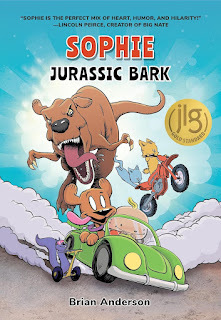
Brian Anderson is the creator of the new graphic novels Sophie: Jurassic Bark and Sophie: Frankenstein's Hound. When I asked him about the inspiration behind the books, he said: "Sophie was inspired by my real-lifedog, and the comic became a documentary with a touch of imagination when my sonwas born. I always planned to expand beyond the shrinking newspaper strips, andgraphic novels were the perfect way to unleash Sophie's adventures andcharacter growth." He added, "Plus, I got lots of emails from youngreaders who'd never even seen a newspaper, but loved Sophie. That was the finalpush to take the leap into graphic novels."
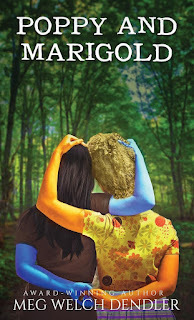
Meg Welch Dendler's new middle grade novel is called Poppy and Marigold. In our interview, she recounted the novel's origins: "Their book began as a short story about two adultwomen in the 1950s from different backgrounds. When I shared it in my critiquegroup, they hated it. I mean, HATED it. I stuck it in a drawer, where it remains to this day, butthe idea of two people kept apart by their cultural differences stuck with me.When I started fussing around with the difference being skin color, thisstory began to evolve. I routinely write for children, and in the sci-fi/fantasyrealm, so it evolved from there. I wanted the colors to be separate fromanything on Earth, so there were no comparisons. Setting these girls in a totalfantasy world allowed for so much freedom."
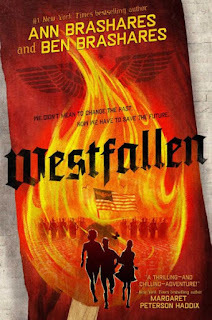
Finally, Ann Brashares and her brother Ben Brashares have collaborated on the new middle grade novel Westfallen. When I asked them about a Publishers Weekly review that said, "TheBrashares vividly illustrate the perils of forgetting lessons of the past inthis historical science-fiction thriller...," Ben answered, "We hoped that would be a take-away from the book. Wewent in with an “entertain first” M.O. and tried not to hit any readers overthe head with any messages but they’re in there and that’s probably one of theclearer ones."
There's always a lot to read, and I wish you some good middle grade reading this November!
--Deborah Kalb
October 31, 2024
Color Me Happy (Holly Schindler)
My web designer of the past 15 yrs (!) recently let me know he was retiring, so...
I've spent the past two weeks putting up a new site of my own.
I just clicked it to go live this morning.

Now that I'm in full control of the site (and won't have to pay anyone to update it), I'll be able to add whatever I want whenever I want. I'll be able to more directly talk to visitors.
That colors me happy, indeed.
Head on over and check the new site out: HollySchindler.com
~
Holly Schindler is the author of the classroom favorite The Junction of Sunshine and Lucky.
October 15, 2024
Building Bridges is Slow Work
I’m enjoying Holly’s current series on plotting with backstory. Be sure to check out her entire series here: Holly Schindler Storyteller.
At the core of her discussion is the process of story engineering. And, in fact, connected to this is the fine art of revision. Remember that old marching song:99 bottles of beer on the wall
99 bottles of beer
Take one down, and pass it around,
98 bottles of beer on the wall.
Its repetitive melody helps you find your rhythm when hiking trails or jumping ropes. It’s an ear worm that keeps you steady when the task at hand seems monumentally tedious. It diverts your attention from the monotony to the goal. That’s what I feel when I revise. When I finish a first draft, breathing a sigh of relief and accomplishment, I move on to the first revision. Only to discover another plot hole. A character acts out of character. First person slips into third person. Or worse, the history is wrong.
I write a blend of historical fiction and American fantasy, blending the folklore that captures the American identity with a unique form of fantasy that – I hope – captures forgotten times and personalities in American history. In fact, my first four books were picturebook retellings of forgotten lore and strong, pugnacious heroines. Remember this, Miss Sally Ann and the Panther: (Holiday House, 2012, illustrated by the great Megan Lloyd), read here by primary school teacher Shelby King.
 Illustration by Megan Lloyd
Illustration by Megan LloydMy first MG book, Big River’s Daughter, (Holiday House, 2013) begins in December 1811, when a series of earthquakes shook the Mississippi River basin. It shook so hard, the river ran backwards. It changed the landscape. Language is as important as the history during this time. In true rough and tumble fashion, the heroes of tall tales mocked and defied convention. Annie Christmas and Mike Fink – two important characters in the book – used language as wild and unabashed as the circumstance and landscape that created them and the protagonist, River. If the language isn’t correct, not only to the time and place and character, it’s time for a second revision.
98 bottles of beer on the wall, 98 bottles of beer… The historical details are particularly important, whether it is the day the river ran backwards or a day during the Civil War. Historians work within a broad spectrum of data-gathering, dairies, journals and other volumes of primary sources. Planning and plotting resemble postnotes arranged in rainbows, Venn diagrams and flowcharts, all in the quest for accuracy. The process of writing historical fiction, like researching history, is neither straightforward nor risk-free. My second MG novel, Girls of Gettysburg, (Holiday House, 2014) focused on Pickett’s Charge during the Battle of Gettysburg. No other time in American history has been so researched, even down to the number of bullets fired during the charge. Historical fiction makes the facts matter to the reader. If you get those details wrong…
97 bottles of beer on the wall, 97 bottles of beer… My third MG book, Barbary Chronicles: The Lost Prince, (Charlesbridge Publishing, Spring 2026) is a historical American fantasy about a rascally pickpocket caught in the middle of a dastardly plot in 1870s San Francisco. It presents a large cast of real and fabled characters, pitched as Oliver Twist meets Deadwood. I lost count of the revisions I had to make that one ready for submission.
Now I’m revising another historical fantasy manuscript. Set during the wild decade of 1870 (again), with the full expanse of the western frontier as backdrop, this story steps into lower YA territory, with a 12-year old protagonist who lives outside of time. This is the American Gods meets the wild, wild west, featuring historical figures and folk legends in some twisted fantasy that explores themes of environmental justice, messy families, and redemption. Important characters include Belle Starr, Nat Love and Bass Reeves, Lapin the Trickster, and the great Raven, and the most irreverent OldMan Coyote, along with a cast of other legendary characters in an epic showdown between good and evil.
96 bottles of beer on the wall, 96 bottles of beer… And, don’t forget. Historical fiction and historical fantasy are some of the hardest sells today.
95 bottles of beer on the wall, 95 bottles of beer… You know what? I hate beer. And this morning, I hate revision even more. It’s hard, hard, hard work. And there’s no guarantee that after all that blood spilled, sweat poured, and tears cried, and there’s been plenty of each, I’ll even be offered that coveted contract. So why do it anyway?
Indeed. Instead of spending all those hours writing, typing, outlining, researching, deleting, cutting, pasting, I could bake a pie. I could give my cat a bath. I could learn a new hobby, plant another garden, or two, or three…
Wait. Pause. Take a breath. I am reminded of the discussion, featured on Jane Friedman’s blog and written by Tom Bentley, Persistence Pays the Weary Writer (Sept. 2022):
“Books are bridges. Nobody builds a bridge all at once—youbuild it in sections, some of which are flawed and need redoing, some of thematerials for which might never be used. But bridges begin small, and with thebuilding, can become big.”
You know, this character, for all her flaws, is getting really interesting. If I could just…
Fine. Back to work.
94 bottles of beer on the wall, 94 bottles of beer…
 Roar! by Megan Lloyd
Roar! by Megan LloydThank you for reading!
--Bobbi Miller
October 14, 2024
Interview with Patti Calkosz, Author of Olaf and Essex
Today, we're joined by Patti Calkosz, author of Olaf and Essex--a forthcoming MG in which a fox and bear take on bumbling witch kidnappers and the NYPD’s Chief Magic Detector to protect a magical baby and the witches of New York.

Welcome to Smack Dab, Patti! Pleasetell us a bit about Olaf and Essex.
Thank you! Olaf and Essex ismy debut. I’m sure my subconscious mind used my brother’s teddy bear and myplush fox as the jumping-off point for the Olaf and Essex characters. Duringchildhood we would sometimes put on puppet shows for family friends. My brotherwas the writer then.
I was utterly fascinated by theidea of a baby who can amplify powers. Where did this idea come from?
When I began writing the story, Ionly had a vague notion that Mabel wanted to steal the baby because of aprophecy that the infant would “bring light to the darkness.” When I wrote thescene where Mabel turned Harvey into a frog, I realized she wouldn’t have beenpowerful enough to transfigure Harvey on her own, that it was the baby’spresence that amplified her power. So then I was able to set Mabel on atrajectory, starting from doing the wrong thing for the right reasons, tohaving her completely lose sight of anything but gaining personal power.
The witches in the book are bothgood and bad and seem to represent how society often tries to suppress thingsthat it doesn’t understand. (I’m thinking of the Magic Detection Unit). Yes?
Yes, exactly! In the first versionof the story, the cops, Jackson and Gardner, visited Mabel just like they do inthe finished book. I always meant for them to be good cops. At thatpoint I was writing about New York City in the future. When the George Floydprotests erupted, I thought that the movement to “defund the police” wouldresult in reformation, and that gave me the idea for the “Conflict ResolutionDepartment.”
While my first editor was readingthe manuscript, a scene popped into my head: a high-ranking police officialinterrogating Mabel, enjoying telling her that she would not get her phonecall. But the scene seemed too dark to fit into that first version. When myeditor told me Mabel’s motivation wasn’t strong enough, I thought about how groupsor individuals with power don’t actually want to give up their power. I figuredthe Conflict Resolution Department would blame society’s problems on witchesand other humans who were adept at magic, and that the department would createa Magic Detection Unit. I also gladly took an agent’s advice to set the storyin an alternate NYC instead of the future.
It's funny because both the witchesand the Conflict Resolution Department/Magic Detection Unit have the same goal;both Mabel and the Chief believe they’re trying to eradicate the dangerouselements in society—each other! If they could just let go of their inherent fearand mistrust of the “other” and have some open-hearted conversations, theywould find they actually have a lot in common and could work together to solvesociety’s problems.
This is one of those magical booksthat will appeal to both children and adults–how to do you manage to strike abalance in the tone?
Perhaps it’s because I enjoyreading across genres and age levels? Or that, as an adult, I have adultconcerns, but I still retain many childlike qualities? Or that I enjoy watchinganimated films, which generally are made to appeal to both kids and the parentswho accompany them to the movie theater? In any case, thank you! I totallyintended that humans of all ages would be able to enjoy my story, so it’swonderful to hear that I succeeded.
The appearance of the book isabsolutely lovely. How closely did you work with the illustrator?
Very! I first commissioned Xiao todraw some illustrations for my new website, while I was still querying. Imentioned to her that I might decide to self-publish, in which case I wouldwant to use those website images for my cover, as well as ask her to draw newillustrations for many of the chapters.
When I decided to indeedself-publish, Xiao asked me to write out a list of illustrations I wanted. Alongwith the list, I added my own sketches—not much more than stick figures—whichshe took as a starting-off point but of course greatly improved upon, and oftenreimagined completely. She also felt that a few of my ideas wouldn’t work orweren’t necessary to the storytelling and asked me to think of alternativeideas for those chapters.
For most of the characters westarted with a design process. For the humans, she asked me to send herpictures of real life people whom I’d imagined as the characters. In a couple instancesshe said, regarding multiple pictures I’d sent for a specific character, “Theseare completely different people!” Because sometimes I had imagined a characteras one person in some scenes and in other scenes as other people.
There was a lot of back and forth,trying different facial structures, different hairstyles, different noses, etc.I sent Xiao a bunch of mobster pictures for Harvey (most of them actors inmobster roles—I’d always envisioned Harvey as a sort of New Yorkermagazine cartoon mobster). The version of Harvey she came up with was so muchbetter than the one I’d had in my head!
Mabel Blackthornudder is both funnyand a villain. Did the character appear this way initially, or was it one ofthose things that came into focus after multiple rewrites?
I tend to write with humor, sowhile I knew I needed a convincing baddie, I think it was inevitable that Mabelwould also be funny. Weeks after I began writing, I realized I’d beensubconsciously influenced by Madame Medusa and Snoops from The Rescuers,one of my favorite animated films from childhood. I’m sure that’s why Ienvisioned Mabel with orange hair (although I think Harvey is a much kinder andnobler man than Snoops was, and he also has more of a backbone). But right fromthe start, Mabel and Harvey had that humorous, bickering dynamic.
Was the book actually born inCentral Park? (I thought I saw a picture of you with a Central Park sculptureon your website–I sort of imagined the characters coming to life for you on awalk through the park!)
The first idea I got for the story wasa mental image of a fox and bear standing with a young girl in a tundra. I’ve neverlived in a tundra, and I didn’t feel I could do that setting justice justthrough book and internet research. Once I made the decision not to set thestory in a medieval town, that I was going to use a modern setting, I naturallyfelt, having grown up in Queens, that the story should take place in New York.And Central Park seemed to be the place that a bear in NYC would find its way to.
I had really just begun writingwhen the pandemic hit, so for more than a year I relied on my memories, theinternet and books about the park. But in the spring of ’21 I started makingtreks to the park and its surroundings, to the locations of specific scenes soI could incorporate details I noticed into the manuscript. I remember thatfirst day, standing on Oak Bridge in the Ramble: the weather was beautiful, thesun shone on the water, the sign for Essex House was off in the distance, and Icould hardly believe I was actually doing field research for a novel I’dwritten after feeling mentally blocked for so many years.
One of my favorite themes in thebook is that of found family. I love unlikely connections–and especially lovedthe trio of Olaf, Essex, and Football. How do you think this unconventionalfamily unit challenges traditional notions of what makes a family?
I wish every child could knowunconditional love within its family of origin. But many children aren’t thatfortunate, and many grow up seeking that type of strong family bond throughfriendships. And every child who grows up in a loving, supportive family,whether it’s “traditional” or not—is incredibly lucky. The people who insistonly traditional families are authentic, or healthy for a child, are comingfrom a place of fear—like you said earlier, they mistrust what they don’tunderstand.
Olaf and Essex both had lovingparents, and in Essex’s case, a loving mate. But when they found themselvesalone, they were able to find each other, care for each other, and help eachother. When the baby came into their lives, they immediately wanted to helpher. I think their family unit is yet another example of the kinds of lovingbonds that are available in so many different variations in this expansiveuniverse.
What’s next?
I’m about 80 pages into a sequel,where the new Commissioner of the Conflict Resolution Department has to find asneakier way to keep control of New York’s magical population. This story isshaping up to be quite different. The animals and the baby—now a toddler—arestill very much involved, but I’m planning to bring in a bunch of new kidcharacters. The good witch, Helga, will likely be more of a main character thistime around. And there will be even more of a focus of tying the spiritual andmaterial worlds together.
Where can we find you?
My website is patticalkosz.com. I’m onInstagram as @patticalkosz and “PattiCalkosz author” on Facebook. Thank youso much!
October 13, 2024
Interview with Brian Anderson, Creator of Sophie: Jurassic Bark and Frankenstein's Hound
Thanks for joining usat Smack Dab, Brian! Tell us all about the whirlwind world of Sophie and herpuptastic adventures!

Thanks for having me! Sophie, my real-life furball, is themastermind behind the whole operation. These graphic novels are her journeyfrom "only child" to wrestling with a new human brother, adopted catchaos, and a revolving door of foster pups. She tackles it all with sass andimagination, of course. Think of it as a real-life documentary with a healthydose of Sophie's wild fantasies thrown in.
Animals are basicallybuilt-in comedians, right? You gotta narrate their inner monologues! Do yourfoster pups get the same treatment?
Absolutely! Each furry friend gets their own unique voice andpersonality, even the fosters. Sophie was a mashup of Peppermint Patty andRipley from Aliens. The cats have thick accents, some German, some Swedish, itdepends on their mood. Every character is based on a real animal, which helpsbring their cartoon versions to life. Let's just say, I've had some prettyinteresting foster pups, and their quirks always find a way into the story.
Calling all aspiringcomic creators! What's your golden nugget of advice?
Read a ton and draw and write even more! Stash a notebook inyour pocket – you never know when inspiration will strike and then vanish likea phantom treat. Perfect for those endless waiting rooms or car rides, too. Ieven started wearing cargo pants (not my favorite look, but hey, gotta do whatyou gotta do!) just to have that notebook handy.

Character first, storylater, or vice versa? What's your creative process?
Definitely characters first! They're the heart of the wholestory. I spend a lot of time getting to know them before mapping out the plot.Back in the "Dog Eat Doug" days, I wrote and tossed out hundreds ofcomics before I really nailed the characters. Those were usually the easyjokes, before the characters truly came alive. Same goes for novels. I wrotethe first book of "The Conjurers" without understanding the maincharacters, which meant a whole lot of rewriting. Comics allow your charactersto evolve over time, but I like to spend a good chunk of time drawing andletting them develop before diving into the story.
"Frankenstein'sHound" features a world-domination plot by cats. Sounds about right! Humorcan be a fickle beast, though. Do you have any secret techniques for conjuringup laughs?
That notebook comes in handy again! Funny lines and twistsrarely appear on command (much like some dogs I know). But when you step awayfrom the drawing table, your brain keeps working on the problem in thebackground. So, the solution might pounce on you at the most unexpected times.I also steal a trick from comedians: I come up with a premise and then workshopit until it makes me laugh. Same goes for the heartwarming moments!
Balancing realism andfantasy – is it a juggling act, or does it flow naturally?
It all came naturally. My inner child is stuck at around tenyears old, so daydreaming is basically a superpower. It also makes it morerelatable for young readers. They can imagine themselves on adventures with mycharacters, or be inspired to create even wilder ones.
Family is a big themein Sophie's world – adoption, sibling rivalry, and the joys of family life.What sparked this focus?
Another natural element! When I created the newspaper strip,Sophie was my only fur-ever friend, so I invented Doug. A few years later, myson arrived, and the strip became a documentary of our lives. All the toys,furniture and situations in Sophie and Doug's world came straight from ourworld.
I came to graphicnovels later in life, thanks to my brother. You're a big advocate for usingcomics to boost literacy. Tell us more!
Absolutely! When parents ask how to get their kids reading, Isay let them explore everything! Eventually, they'll stumble upon a characteror genre they love. Boom! Instant reader. Comics are especially great foryounger kids. The pictures help them connect with the characters faster and canbe more engaging than a book that starts slow or doesn't match their readingstyle.
Let's face it, screens rule the world these days. But how manykids, after watching a superhero movie, would love to keep the story going byreading the comics? Comics are the perfect gateway drug to reading! They usedto be looked down on, but thankfully things have changed a lot since I was akid. I've even gotten numerous letters from teachers who used the comic stripsin the classroom as a teaching aide. First off, that melted my heart, butsecondly, it confirmed that if you make reading fun early, you'll get morereaders later.
What's next? SurelySophie will be going on additional adventures!
Yes indeed! We have a lot planned. Some of it I can't let out ofthe bag yet, although, let's just say, you may be hearing Sophie's voice in adifferent medium soon.

Where can we find you?
Usually curled up with several dogs and cats. Oh, you meanonline? You can find me at www.brianandersonwriter.com (which is the same aswww.dogeatdoug.com) and @dogeatdougcomics on IG.
October 12, 2024
Color Classics by Darlene Beck Jacobson
As I thought about this month's theme of COLOR, I was reminded of some of my favorite childhood books - now classics - with colors in the titles. Here are a few:
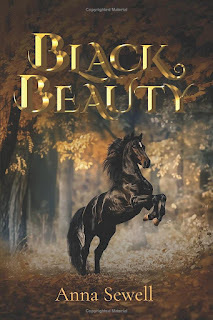
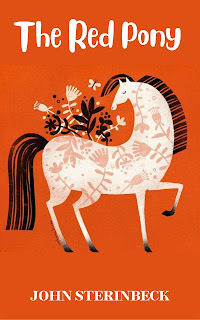



The only one I haven't read from this very incomplete list is WHITE FANG. Can you think of some other classic middle grade books with colors in the title?
Which ones are your favorite?
Darlene Beck Jacobson loves to surround herself with color and really enjoys the ANN OF GREEN GABLES books.

